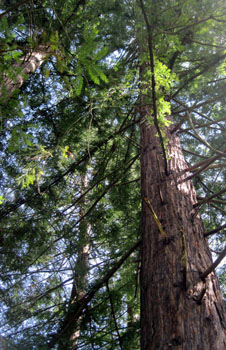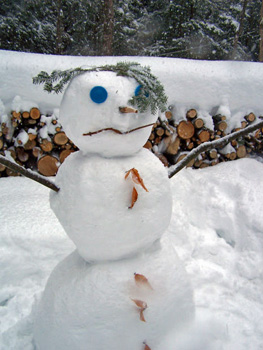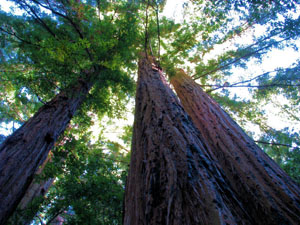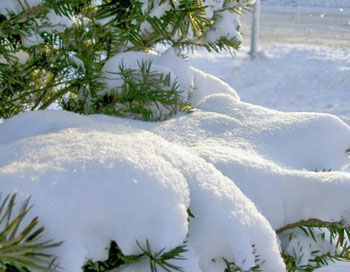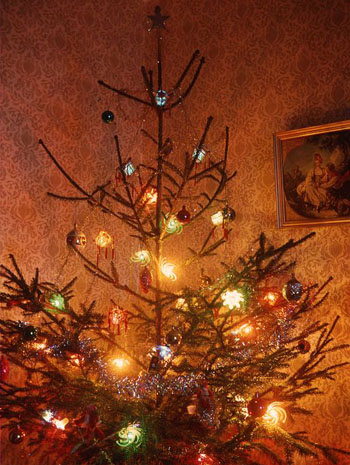A redwood tree.
Looks like any other coastal redwood tree, doesn’t it?
So, what’s so special about THIS one?
THIS tree was started from a seedling,
which was started from a seed,
which went around the moon 34 times.
Let’s back up. When on January 31, 1971 Apollo 14’s Lunar Command Module pilot Stuart Roosa took off, he had packed away in his personal gear nearly 500 seeds of loblolly pine, sycamore, redwood, Douglas fir and sweetgum trees. Working in conjunction with the U.S. Forest Service, the idea was to see if the prolonged weightlessness of seeds would ultimately affect their growth to mature trees—a good thing to know “should colonization of other planets become necessary.” A control group of seeds stayed back on Earth for comparison.
Once back home, supposedly more than 80% of the seeds were germinated in some U.S. Forest Service nurseries. (After years of observation, by the way, no discernable difference was detected.) Then in or about the bicentennial year 1976, “Moon Tree” seedlings were distributed throughout the U.S. and ceremoniously planted with the reading of a congratulatory letter from President Gerald R. Ford.
Among sites that requested seedlings were botanical gardens, state capitols and courthouses, state parks, state universities, nature centers, schools, libraries, and space science properties. Some areas made their own signs marking locations of the trees, while other trees bear no marking at all. The still-alive sycamore planted at Camp Koch Girl Scout Camp in Indiana bears the hand-painted sign “. . . Long live our beautiful Moon Tree.”
Precise records were not kept with regard to the seedling distribution. But a man named David Williams has made it his own personal mission to track down and catalogue the whereabouts of these seedling/trees. Williams has a list of those he knows about at http://nssdc.gsfc.nasa.gov/planetary/lunar/moon_tree.html. If you know of a Moon Tree planting not listed (dead or alive), he would like to hear about it dave.williams@nasa.gov.
Now, “Half-Moon Trees” are being grown naturally from the discarded and cross-pollinated seeds of original Moon Trees. If you are so inclined, check search engines for those who are selling these babies and also for those who are grafting and cloning the original Moon Trees.
Photo credit: Thanks to Susan Peck who recently photographed this now tall Moon Tree at the Tilden Nature Area, Berkeley, CA
Nancy R. Peck
